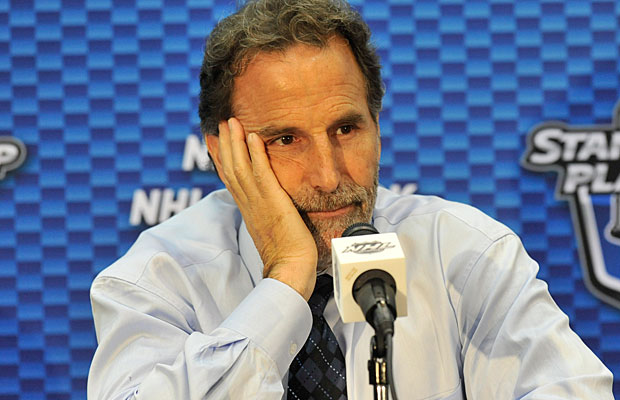Thank You Nicklas Lidstrom
May 30, 2012 2 Comments
As a 24 year old, I often think that I haven’t been around to see many of the players that dominated their sports because I feel that the true legends played and retired before I was even born.
Greats like Babe Ruth, Walter Payton, Wilt Chamberlain and Bobby Orr come to mind.
Even players who did play during my life often get put into this category since I was too young to really remember them. These are guys like Larry Bird, Joe Montana and Mike Schmidt.
And I’ll admit, there are also players like Wayne Gretzky who played well into my life that I don’t really remember because I took them for granted at the time and didn’t realize their importance to the world of sports. I really regret these instances because a player like Gretzky will probably never come along in my life time.
But I realize I can use these regrets to remind me to appreciate the greats of sports that are still playing.
That brings me to Nicklas Lidstrom.
The Detroit Red Wings announced today that there will be a scheduled a press conference tomorrow at 11 a.m., which will be attended by Lidstrom and general manager Ken Holland. It’s reasonable to assume that Lidstrom may announce his retirement from hockey.
Without a doubt Lidstrom is and will be one of the best players to ever lace up skates. The 42-year-old captain has compiled quite a list of achievements and statistics in his 20-year career. He has won four Stanley Cups, seven Norris Trophies, one Conn Smythe Trophy and was an All-Star 11 times.
The Swedish defenseman was also the first European-born NHL captain to win a Stanley Cup, which earned him a membership in the Triple Gold Club – a group of 25 players who have won an Olympic Games gold medal, a World Championship gold medal and the Stanley Cup.
Lidstrom was one of the smartest defenseman in the history of the NHL. His ability to read plays in front of him and always be in ideal position made him impossible to deal with for opposing teams. He could score, distribute the puck, kill penalties and work the power play.
He wouldn’t overwhelm you with his physical game, but he didn’t need to. He could make you turn the puck over by being in perfect position.
And when Lidstrom was on the ice, chances were a lot better that the Wings would score a goal instead of their opposition. He ranks 8th all-time in career plus/minus as a plus-450. He leads all active players in this category, as well as games played.
I could go on and on.
Now I’ll admit that I still probably didn’t watch Lidstrom play as much as I should have. I grew up a Penguins fan and my broad interest in all NHL teams and players didn’t develop until around the 2000s. For the majority of my life, I was busy watching Lemieux, Jagr and then Crosby and Malkin.
But there is one memory of Lidstrom that I will never forget. He was part of the greatest sports memory in my life to date. It was June 12, 2009. Game 7 of the 2009 Stanley Cup Finals — Penguins versus Redwings.
Neither the Pens nor the Wings had lost a game at home in the series. Pittsburgh had the momentum going into Game 7, coming off of a Game 6 home victory, but the Red Wings lost only one game at home during the entire playoffs — and it came in triple overtime.
Pittsburgh held a 2-1 lead in the final minutes of the third, but Detroit surged and put immense pressure on the Pens. With only seconds left, Detroit forward Henrik Zetterberg blasted a shot from the right circle on Pittsburgh netminder Marc-Andre Fleury. The puck deflected off of Fleury’s pads, sending it to the far left side of the ice. Lidstrom was there to receive the rebound (in perfect position as always) with the entire left side of the net gaping in front of him. He blasted a shot with two seconds remaining, only to have Fleury dive across to stop it and end the series.
Never have I transitioned from such a feeling of impending doom to pure elation so quickly. I was sure Lidstrom would bury the shot because, well, he was Nick Lidstrom. When my team was able to stop him to secure a Stanley Cup victory, it only further solidified the fact that the Penguins were the best in hockey. I don’t know if I’ll ever have a moment like that again.
So thank you Nicklas Lidstrom for coming up short just that one time. I’ll never forget your legendary status and how it made me feel that day.
If you retire tomorrow, it will be a retirement well deserved.


